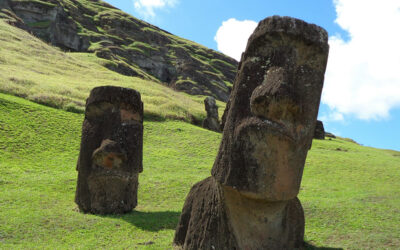The use of plants for their psychotropic effects is intertwined with mankind’s history. But exactly how old this practice actually is has been debated in the scientific community for quite some time. Now, recent findings may help lay this question to rest.
By analyzing human hair from remains recovered from an archaeological site in Es Càrritx, Menorca in the Balearic Islands, researchers say they have provided the first direct evidence of drug use during prehistoric times.
“We have tried to find direct proof of prehistoric drug consumption using current toxicology procedures,” explained Cristina Rihuete-Herrada of the Department of Prehistory at the Autonomous University of Barcelona. “And we have succeeded. Our study has demonstrated that 3000 years ago, there was consumption of hallucinogenic substances. It is the oldest evidence known so far in Europe.”
Like all organic material, hair is difficult to study in ancient remains as it decays, meaning there is very little left during excavations to analyze. “Hair is subject to decay, as any other organic substance, although its decomposition rate is slower because it is more resistant to bacterial and fungi attack,” said Rihuete-Herrada. “Under certain circumstances, hair can last for a few centuries, but it is more than rare to find any kind of hair in prehistoric contexts.
“Plant remains are also difficult to find in this kind of prehistoric context for the same reason as hair: they are also organic and therefore subject to decay,” she continued. “Nevertheless, they can survive thousands of years if they were partly burned.”
The team identified several plants at the site that contain a group of nitrogen-containing compounds called alkaloids, which have pronounced physiological effects. These included ephedrine, atropine, and scopolamine, and evidence hints that they were consumed by the inhabitants of Menorca more than 1100 years ago.
To identify the molecules, the researchers used an advanced technique called ultra-high performance liquid chromatography-high resolution mass spectrometry, which allows research to characterize molecules based on their masses.
“Drug consumption, especially psychoactive alkaloids as the ones we have identified, is supposed to have been a long-lasting practice among humans because they can induce the kind of altered states of consciousness that are sought in many different ceremonial, spiritual and healing practices,” added Rihuete-Herrada. “Our discovery provides direct proof of this consumption instead of guesses based on indirect evidence.”
Alkaloids can be toxic in certain doses, meaning knowledge of their toxicity and dosing was most likely required. “We had indirect evidence of ritual shamanic practices, most specially in some caves whose very access meant a life-threating experience,” explained Rihuete-Herrada. “It is possible that these ceremonies were performed with the help of these drugs. In any case, their discovery speaks about a very ancient and highly specialized knowledge of the non-food use of different plants.”
These findings may prompt investigations into the use of psychoactive substances in other Bronze Age populations found at other sites. “Now that we have shown the feasibility of this type of analysis, the next logical step will be to replicate our tests in two other similar contexts where human hairs have been miraculously preserved,” concluded Rihuete-Herrada.
This could provide a more complete picture of how plants were used for ritual purposes in different parts of the world, perhaps with different adaptations driven by area-specific availability.
Reference: E. Guerra-Doce, et al., Direct evidence of the use of multiple drugs in Bronze Age Menorca (Western Mediterranean) from human hair analysis, Scientific Reports (2023). DOI: 10.1038/s41598-023-31064-2
Feature image credit: Nicola Fittipaldi on Unsplash

















